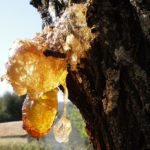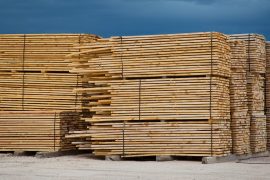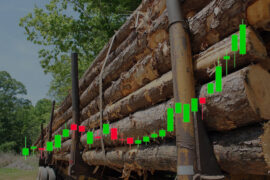Different types of wood have different properties. Various types of wood properties such as strength, beauty, density, color, and other characteristics are causing different functions.
Choosing the suitable wood to build a wooden project depends on the properties and the nature of that project.
People interested in music are everywhere, in any country or cities you can ever imagine!
Every year many wooden musical instruments are being made all over the world.
Choosing the suitable wood for building musical instruments is a very important step.
The wood used to make musical instruments has a great influence on the quality of the sound produced.
The durability, s
Lichtenberg Wood Burning eBook

Download Lichtenberg Wood Burning eBook
One of the modern techniques for creating wooden artwork is called Lichtenberg wood Burning. In this eBook, we are going to introduce this newfound art to you.
This technique is known with some different names such as Lichtenberg wood burning, fractal wood burning, and electricity wood art.
This technique should not be confused with wood burning art or pyrography. The art of pyrography on wood is the art of creating motifs and designs by burning with hot metal tools on objects such as wooden surfaces.
Lichtenberg burning is a wood-burning technique for creating designs with electricity.
This eBook is a comprehensive guide on Lichtenberg Wood Burning. All you need to know for Lichtenberg Wood Burning is here.
This is a limited-time offer, order now to get access to the future eBook releases.
In this article, we will review the different types of wood for musical instruments.
Types of Wood for Guitars

The sound quality of a guitar depends on a variety of factors, including shape, size, and gender of its wood.
In this part, we try to review the different woods in guitars.
The soundboard of the guitars has the most important role in producing the sound and is often being made from spruce wood or cedarwood.
Note that the thickness and bracing of soundboards
Pinewood is lightweight and resistant to stretching but vulnerable to impact.
This wood is one of the most used woods for the soundboard of guitars.
Generally, for making the back and sideboards, we use from the same wood with a higher density.
You can use different types of wood to build the back and sideboards
Rosewood is one of the most popular woods in making the backboard of a guitar.
Mahogany wood has a compressed texture and often is being used for making guitar handles. As well as the maple wood which is white, hard and dense and has a very clear sound, the sound produced by this wood is high-volume and suitable for live performances.
It should be noted that various guitars may be made from different types of woods.
The woods for making flamenco guitars are cedarwood, spruce wood for top board, as well as cypress wood, rosewood and maple wood for back and
Types of Wood for Violins

There are many types of wood that are especially for musical instruments.
For making violins, there is also some kind of woods which we can use.
Violin makers usually need hard and dense wood like Maple, Spruce, and Ebony.
Maple, or sometimes Poplar, is used for the back, ribs, neck, bridge, and scroll.
Spruce is a softwood with high hardness and is used for the top, or front of the violin. As well as the bass bar and sound posts.
Willow is also best for the internal blocks and lining.
Fingerboards, pegs, tailpieces and end pins need to be made from strong woods like ebony.
Ebony is one of the strongest woods in the world and its black painting is optional to create the look of the violin.
Types of Wood for Piano

There are various factors in the quality of making a good piano.
One of the most important elements is the wood which is used to build the piano.
Many of piano pieces are made from wood such as action, rim, and chestnut.
So it’s obvious that choosing the right wood for piano is very important.
The wood and glue used on the piano should have a high resistance to moisture and heat.
Soundboard is one of the most important parts of the piano.
Usually, spruce wood is used for making sound broads, because it has high reflective property.
Maple is recommended for many piano parts of pianos which includes bridges and pin block.
The other parts of the piano like rim, back posts and exterior are made of suitable different woods.
The rim is generally made from mahogany or spruce. As well as the back posts are made from spruce.
It should be noted that choosing the wood for the piano parts is a specialized task that requires many years of experience and study.
Types of Wood for Drum Shell

There are different types of wood that are recommended for making drum shells.
For good choice, you need to know the specifications of the wood types.
You must know there are only a selected few types of woods for drum shells including birch, maple, oak, mahogany, basswood etc.
Birchwood is the most popular wood for drum shell. Using this wood, you can make low price and high-quality dramas.
Maple wood is cheaper than birch wood and is a good alternative.
Drums built of maple wood will produce a higher sound and a warmer tone.
Mahogany wood, oak wood, and beech wood are suitable woods and ideal for drum making.
Types of Wood for Flutes

African Blackwood, Cocuswood, Mopane wood, and Cocobolo wood are the best woods for making flutes.
Often the first choice for making flutes is African wood due to its power.
African Blackwood grows in Eastern Africa.
Cocus wood is a dense hardwood and grows in west indies that are also known as Jamaican.
Cocus wood was used heavily in Europe for making flutes and other woodwind instruments.
Cocobolo wood is another hardwood that grows in Central America.
The inside of cocobolo wood is orange or reddish-brown color.
It’s very strong and is being used for making flutes.
Mopane wood is the next wood for building flutes.
The mopane tree only grows in the far northern areas of southern Africa.
It is very hard, heavy and oily that is resistant to pests which it very useful for making flutes.







Comments
Pingback: All Types of Wood Arts In The World | Wood Dad
Pingback: How To Make Money as a Woodworker | Wood Dad
Pingback: Top 10 Characteristics of Good Quality Lumber (Part 2)